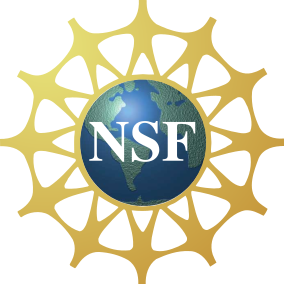| Monday |
| 9:30 |
Gerd Faltings |
Mordell past and present (slides)
I present the history of the proof of Mordell in 1983 and report on
recent developments.
|
| 10:30 | Coffee/tea | |
| 11:15 | | (click to see authors and titles) (click to collapse) |
| Marius Leonhardt | Affine Chabauty (slides) |
| Florian Ito Sprung | Hilbert’s 10th problem for number fields (slides) |
| Ashvin Swaminathan | A positive proportion of monic odd hyperelliptic curves have no unexpected quadratic points (slides) |
| Matt Broe | The motive of the g-fold product of a CM elliptic curve (slides) |
| Aaron Landesman | The distribution of ranks of abelian varieties in quadratic twist families over function fields (slides) |
| Rina Paucar | On a special case of Bloch-Beilinson conjectures (slides) |
| Chris Xu | Model-free quadratic Chabauty for modular curves (slides) |
| 2:00 |
Ziyang Gao |
Sparsity of rational points on curves (slides)
It is a fundamental question in mathematics to find rational solutions to a given system of polynomials, and in modern language this question translates into finding rational points in algebraic varieties. This question is already very deep for algebraic curves defined over ℚ. An intrinsic natural number associated with the curve, called its genus, plays an important role in studying the rational points on the curve. In 1983, Faltings proved the famous Mordell Conjecture (proposed in 1922), which asserts that any curve of genus at least 2 has only finitely many rational points. Thus the problem for curves of genus at least 2 can be divided into several grades: finiteness, bound, uniform bound, effectiveness. An answer to each grade requires a better understanding of the distribution of the rational points.
In my talk, I will explain the historical and recent developments of this problem according to the different grades. I will also mention an ongoing work (joint with Shouwu Zhang) about a non-vanishing property and a Northcott property of the Gross-Schoen cycles and the Ceresa cycles for curves.
|
| 3:10 | | (click to see authors and titles) (click to collapse) |
| Ivan Aidun | Arithmetic strength of curves (slides) |
| Lorenzo Furio | Recent progress on Serre’s uniformity question (slides) |
| Arav Karighattam | Heegner points on y2 = x3 + p (slides) |
| Elvira Lupoian | Cuspidal groups of modular Jacobians (slides) |
| Boaz Moerman | Generalized Campana points and adelic approximation (slides) |
| James Austin Myer | (Toward) an algorithm to (explicitly) produce a regular model of a hyperelliptic curve in (bad) Characteristic (0,2): a criterion to verify regularity of the normalization of a candidate model (slides) |
| Robin Visser | Computing genus 2 curves over Q whose Jacobian has good reduction away from 2 (slides) |
| 4:00 | Coffee/tea | |
| 4:45 |
Lars Kühne |
The Uniform Mordell–Lang Conjecture
Refining the arguments of Dimitrov–Gao–Habegger and Kühne, we have been able to prove the general case of the uniform Mordell–Lang conjecture in joint work with Gao and Ge. This conjecture states that the intersection of a variety with a finite rank subgroup in an abelian variety is a union of finitely many cosets, whose number can be bounded from above purely in terms of the degree of the subvariety, irregardless of the ambient abelian variety. Our result also contains the full uniform Bogomolov conjecture in abelian varieties. In my talk, I will focus on our strategy to deal with higher-dimensional subvarieties.
|
| Tuesday |
| 9:30 |
Xinyi Yuan |
On the uniform Mordell conjecture
In the past few years, the uniform Mordell conjecture proposed by Mazur was proved by Dimitrov–Gao–Habegger, and Kuhne, where the proof is based on Vojta's proof of the Mordell conjecture. By the theory of adelic line bundle of Yuan-Zhang, I have obtained a different proof which works over both number fields and function fields. In this talk, I will give a survey on these results.
|
| 10:30 | Coffee/tea | |
| 11:15 | | (click to see authors and titles) (click to collapse) |
| Elyes Boughattas | The tale of the fibration method (slides) |
| Jerry Yu Fu | Isogenous elliptic curves in a family ordered by height (slides) |
| Asimina Hamakiotes | Towards a classification of p2-discriminant ideal twins over number fields (slides) |
| Maleeha Khawaja | Primitive algebraic points on curves |
| Pietro Mercuri | Arakelov canonical divisor and Bogomolov conjecture for modular curves (slides) |
| Thibaut Misme | Automatized computation of Odd Theta Caracteristic and 2-descent (slides) |
| Madhavan Venkatesh | Effective bounds for Gabber’s theorem (slides) |
| 2:00 |
Umberto Zannier |
The affine case of Mordell conjecture: a survey on Siegel's theorem on integral points
In 1929 an epoch-making paper of Siegel offered a theorem representing the Mordell conjecture for affine curves: "A hyperbolic affine curve has only finitely many integral points" (which is a best-possible condition).
In the talk I shall briefly survey on the history of this result, pointing out some proof-approaches, extensions to higher dimensions, and related issues, like effectivity or uniform estimates for the number of solutions of diophantine equations in integers.
|
| 3:10 | | (click to see authors and titles) (click to collapse) |
| Niven Achenjang | The average rank of elliptic curves is bounded, over any global field (slides) |
| Luca Ferrigno | Isogeny relations in products of families of elliptic curves (slides) |
| Giorgio Navone | Transcendental Brauer group of certain K3 surfaces (slides) |
| Benjamin York | Models of CM elliptic curves with prescribed ℓ-adic Galois image (slides) |
| Roy Zhao | Algebraic Independence of Special Points on Shimura Varieties (slides) |
| Sa’ar Zehavi | The Chabauty–Kim-Kantor method |
| Pratiksha Shingavekar | A positive density of elliptic curves are diophantine stable in
certain Galois extensions (slides) |
| 4:00 | Coffee/tea | |
| 4:45 |
Bianca Viray |
Algebraic points on curves (slides)
The Mordell Conjecture (proved by Faltings in 1983) is a landmark result exemplifying the philosophy "Geometry controls arithmetic". However, it also implies that we can never hope to understand the arithmetic of a higher genus curve solely by studying its rational points over a fixed number field. In this talk, we will introduce the concepts of parametrized points and density degree sets and show how they, together with the Mordell-Lang conjecture, allow us to organize all algebraic points on a curve.
|
| Wednesday |
| 9:00 |
Ehud Hrushovski |
Towards a model theory of heights (slides)
I will discuss some past, present, and hopes for future contacts between model theory and diophantine geometry. Such contacts are always mediated by a `tame' intermediate theory, such as differential or separably closed fields, difference fields, or the theory of the real exponential field with local analytic functions. I will describe the state of our attempts to construct such a tame theory capable of defining heights.
|
| 10:00 | Coffee/tea | |
| 10:30 |
José Felipe Voloch |
Mordell's conjecture in positive characteristic and descent obstructions (slides)
I will give a brief historical overview of the Mordell conjecture over function fields of positive characteristic (mainly). Then, I'll discuss its relationship with descent obstructions for rational points and present a recent result obtained with B. Creutz, which completes my earlier work with B. Poonen, showing that finite descent obstructions fully characterize the rational points on non-isotrivial curves over function fields.
|
| 11:40 |
Levent Alpöge |
Conditional algorithmic Mordell
We all know there is a Turing machine Tmwrank with the following
properties.
- On input E/K an elliptic curve over a number field, if Tmwrank terminates, it outputs rank E(K).
- Assuming standard conjectures Tmwrank terminates on all inputs.
In fact Tmwrank terminates in reasonable time in practice and the conjecture involved is "only" the finiteness of a p-part of a Tate-Shafarevich group.
It would be amusing to have the same situation for rational points on curves. This talk will focus on the following.
Theorem (A.-Brian Lawrence): there is a Turing machine TMordell with the following properties.
- On input C/K a smooth projective hyperbolic curve over a number field,
if TMordell terminates, it outputs C(K).
- Assuming standard conjectures TMordell terminates on all inputs.
As a comparison with Tmwrank, this algorithm is full of brute-force searching and so is fundamentally hopeless to run in practice. Also, the relevant conjectures are the Hodge, Tate, and Fontaine-Mazur conjectures, which I consider much more hopeless.
If I have time I will mention how one can produce a totally unconditional statement for certain curves over an infinite family of number fields by using potential modularity theorems.
|
| Thursday |
| 9:30 |
Evelina Viada |
On the torsion and rational points of some curves (slides)
I will present an overview of some explicit methods in the context of the Manin-Mumford and Mordell Conjecture. This allows to give examples of families of curves whose rational and torsion points can be explicitly determined.
|
| 10:30 | Coffee/tea | |
| 11:15 |
Damaris Schindler |
Density of rational points near manifolds (slides)
Given a bounded submanifold M in ℝn, how many rational points with common bounded denominator are there in a small thickening of M? Under what conditions can we count them asymptotically as the size of the denominator goes to infinity? I will discuss some recent work in this direction and arithmetic applications such as Serre's dimension growth conjecture as well as applications in Diophantine approximation. For this I'll focus on joint work with Shuntaro Yamagishi, as well as joint work with Rajula Srivastava and Niclas Technau.
|
| 2:15 |
Nicole Looper |
Rationality in arithmetic dynamics (slides)
Arithmetic dynamics is a relatively new field that draws inspiration from both algebraic geometry and classical complex dynamics. On its Diophantine side, arithmetic dynamics comprises a number of analogues and generalizations of statements concerning rational points, such as the Uniform Boundedness Conjecture of Morton and Silverman. In the reverse direction, ideas drawn from dynamical systems have deep implications for problems concerning rational points on curves and abelian varieties, particularly via potential theory and recent developments in Arakelov theory. This talk will discuss these two connections, along with the salient techniques that have emerged as well as avenues for further exploration.
|
| 3:15 | Coffee/tea | |
| 4:00 | Problem session | |
| Friday |
| 9:30 |
Marta Pieropan |
Campana points: conjectures and results
Campana points are an arithmetic notion, first studied by Campana and Abramovich, that interpolates between the notions of rational and integral points. Campana points are expected to satisfy suitable analogs of Mordell's conjecture, Lang's conjecture, Vojta's conjecture and Manin's conjecture, and their study introduces new number theoretic challenges of a computational nature. In this talk I introduce Campana points, recall the main results, and discuss a range of open questions.
|
| 10:30 | Coffee/tea | |
| 11:00 |
Hector Pasten |
Xeric varieties and their relation with geometry and p-adic analysis (slides)
General conjectures mainly due to Green, Griffiths, and Lang, predict that for a smooth projective variety X defined over a number field K the following are equivalent:
- (an arithmetic condition) X is Mordellic, that is, for every finite extension L/K the set X(L) is finite;
- (a geometric condition) X does not admit any non-constant rational maps from abelian varieties over an algebraic closure of K; and
- (an analytic condition) for some (or all) complex embedding of K, the variety X is complex hyperbolic.
We will discuss a similar conjecture regarding sparsity of rational points rather than finiteness. Namely, we say that X is xeric if X( L) is sparse for every finite extension L/ K and we expect that the following are equivalent:
- (an arithmetic condition) X is xeric;
- (a geometric condition) over an algebraic closure of K, the variety X contains no rational curves; and
- (an analytic condition) for some (or all) primes p, every p-adic analytic map from the affine line to X is constant.
The conjecture is motivated by earlier conjectures of Manin and Cherry. We will present several examples where the equivalences hold (at least partially) and we will discuss its relation with other general conjectures. This is joint work with Natalia Garcia-Fritz.
|
| 2:00 |
Alexander Betts |
Chabauty–Kim theory: retrospectives and prospects (slides)
Over the last twenty-odd years, Minhyong Kim's method of non-abelian Chabauty has provided a powerful tool for addressing Mordell-like Diophantine problems. In this talk, I will give an overview of the development of the method: highlighting some of its key successes, and drawing out some common themes in the techniques used and the problems addressed. Time permitting, I will also say a few words about where I think the method is heading, and what I think the major challenges are.
|
| 3:00 | Coffee/tea | |
| 3:30 |
Michael Stoll |
Formalizing Mordell? (slides)
I will give a short introduction to interactive theorem proving (using Lean) and will then discuss what would be needed to (a) state and (b) give a proof of Mordell's Conjecture in Lean, building on its mathematical library Mathlib.
|
|







